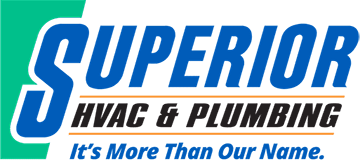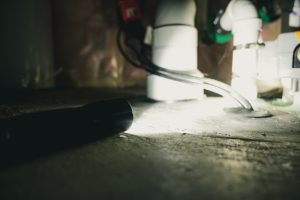A flooded home is a homeowner’s true nightmare – water damage can take a huge amount of time and money to fix and, in some cases, can even be irreparable. That’s where your sump pump comes in. This integral device helps to ensure that your home doesn’t flood, which is why it’s essential to both maintain and troubleshoot it.
What is a Sump Pump?
A sump pump is a device that moves water from your home’s basement to somewhere outside of the home. The pump usually sits below the basement floor, and its job is to detect rising water. It’s equipped with valves that can detect a change in pressure or water levels; when the levels get too high, the sump pump automatically pumps the excess water out of your home and into a designated drainage area.
Obviously, the sump pump is critical in preventing flooding in your home. That’s why you need to know how to troubleshoot it and when you’re due for sump pump repair or sump pump replacement. Here are eight signs you need to schedule an appointment to have your pump checked.
Critical Signs That You Need a Sump Pump Repair or Replacement
It’s making loud noises. All sump pumps should make some degree of noise when they’re in use, but they shouldn’t be excessively loud. Odd noises like rattling, clanging, or screeching can indicate a problem. Sounds like this can indicate a failing pump or problems with the lines or pipes, as well as a damaged impeller (which is a part that resembles a propeller inside the pump). If you hear loud or odd noises, it’s time to schedule a sump pump repair.
It runs all the time, or it runs for an excessively long time. Your sump pump should not be running all the time. It should only run when it’s doing its job – moving excess water away from the house. If you notice it running constantly or for longer than it used to, it could mean that the pump is too small for the job it’s been tasked with, or that it has a damaged float switch. Either way, you’ll need to schedule repairs for the broken part or plan for a sump pump replacement to keep your home flood-free.
You notice excessive vibrating when it’s running. If your sump pump sucks in debris, it can cause the impellers to be damaged or bent. This can cause the impellers to wobble while in motion and, over time, cause major damage to the pump. If you notice excess vibrations, it’s time to schedule sump pump repair.
RELATED: HOMEOWNER HOW-TO: HOW TO TURN OFF OUTSIDE WATER SUPPLY & HOW TO DRAIN PIPES FOR WINTER
It’s not cycling on and off regularly. Have you noticed that your pump is turning on pretty frequently? This could mean that the pump is being overwhelmed and is too small for your home, or that it has wiring issues that are causing the pump to stop and start sporadically.
You can see what looks like rust on the pump. It’s probably actually Iron Bacteria, a bacteria dubbed as such because of its color. Over time, Iron Bacteria can cause your pump to clog, which means you’ll need a sump pump repair to get it up and running.
The motor gets stuck or, worse, fails. Internal wiring failures, a burnout due to clogs, and more can cause the motor in your sump pump to fail. When this happens, the pump will no longer run, and it’s more than likely you’ll need a replacement.
You rarely use it. Just like a car battery, the less you use a sump pump, the shorter lifespan it’s going to have. You should regularly test your pump in between heavy rainstorms to ensure it’s working and also get it up and running for a longer life.
It’s more than seven years old. Sump pumps don’t last forever. Typically, their lifespan caps at around seven years. If it’s older than that, it’s time for a sump pump replacement.
Contact Superior HVAC & Plumbing for your Sump Pump Needs
Are you concerned that your sump pump needs to be repaired or replaced? We can help – contact Superior HVAC and Plumbing today.

